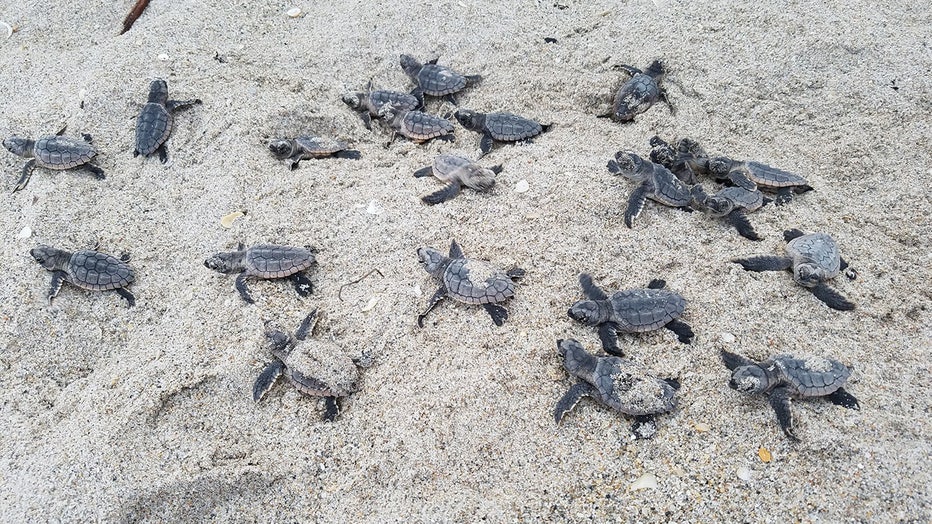Be aware beachgoers, sea turtle nesting season is underway
Riding along with Sea Turtle Trackers
Since 1979, a volunteer-based organization called Sea Turtle Trackers has been helping turtles and empowering people to do the same.
CLEARWATER, Fla. - The tracks of female sea turtles have already been spotted in South Florida beaches as the species’ nesting season begins.
State wildlife officials say the sea turtle nesting season falls between the beginning of March and the end of October – but could start earlier. With that said, it’s a reminder to beachgoers that when they come across certain areas that are marked off in the sand, don’t mess with it.
"It’s important for people to recognize how we mark our nests. What you’re going to see when you come to the beach is a roped-off area with yellow stakes and some signs that clearly state not to disturb the nests," Yvette Fernandez, the senior sea turtle biologist with Clearwater Marine Aquarium, told FOX 13 last year. "The reason for that is because we want to leave enough space for them to do what they have to do as they incubate under that sand."
According to Visit Florida, more than 100,000 sea turtles' nests can be found on Florida beaches every summer. Down in Broward County, the Sea Turtle Conservation Program noticed leatherback tracks Thursday morning at Pompano Beach.
When it comes to beachfront lighting, it’s important to make sure those lights don’t attract baby turtles away from the sea. FWC says there are three "golden rules" when it comes to the lighting:
- Keep it low: Fixtures must be mounted as low as possible and still be appropriate for the needed purpose. Bulbs must produce the lowest wattage/lumens necessary for the needed purpose.
- Keep it long: Lamp/bulb must produce only long-wavelength light (560 nm or greater, which is amber, orange, or red).
- Keep it shielded: Fixture must be completely downward-directed. The fixture must be able to shield the bulb, lamp, or glowing lens from the beach.
READ: For leatherback sea turtles, reporting entanglements is key to survival
It takes everyone doing their part to keep these hatchlings safe. No matter how cute they might be, if you see a hatchling on the beach, Fernandez advised not to touch the turtle but to instead call FWC at *FWC or #FWC, or send a text to Tip@MyFWC.com.

Loggerhead hatchlings (FWC photo by Tonya Long)
In Florida, all five of its sea turtle species are either endangered or threatened, meaning it's illegal to harm, harass or kill any sea turtles, their eggs, or their hatchlings.
The Endangered Species Act lists the green, leatherback, hawksbill, and Kemp’s ridley turtle as endangered. The loggerhead turtle is listed as a threatened species.
Learn more about sea turtles in Florida by visiting FWC’s website.

